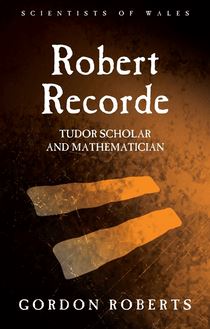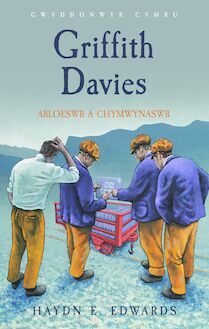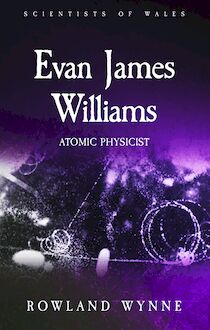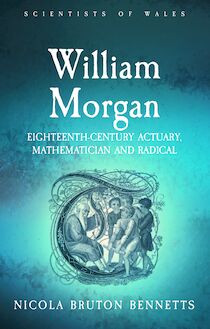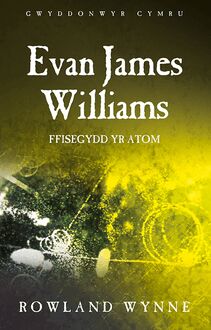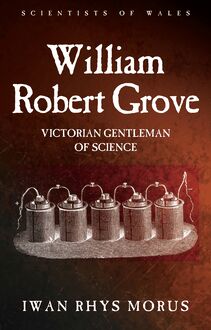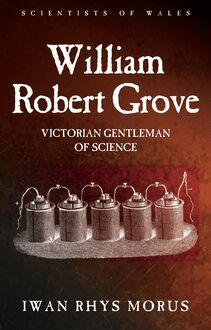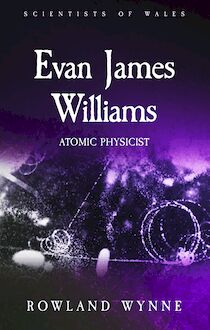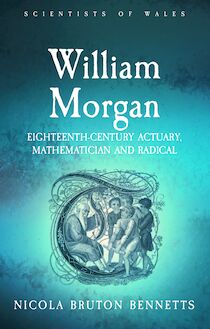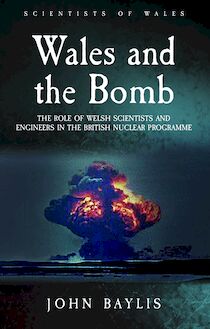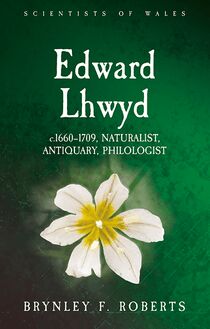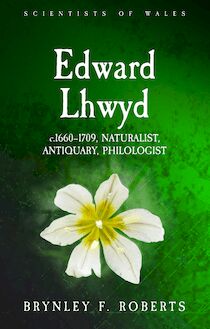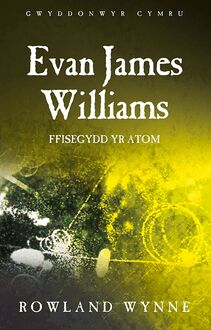-
 Univers
Univers
-
 Ebooks
Ebooks
-
 Livres audio
Livres audio
-
 Presse
Presse
-
 Podcasts
Podcasts
-
 BD
BD
-
 Documents
Documents
-
- Cours
- Révisions
- Ressources pédagogiques
- Sciences de l’éducation
- Manuels scolaires
- Langues
- Travaux de classe
- Annales de BEP
- Etudes supérieures
- Maternelle et primaire
- Fiches de lecture
- Orientation scolaire
- Méthodologie
- Corrigés de devoir
- Annales d’examens et concours
- Annales du bac
- Annales du brevet
- Rapports de stage
La lecture à portée de main
Découvre YouScribe en t'inscrivant gratuitement
Je m'inscrisDécouvre YouScribe en t'inscrivant gratuitement
Je m'inscrisEn savoir plus
En savoir plus

Description
The main focus of this book is on the contribution of Welsh scientists, engineers and facilities in Wales to the British nuclear programme – especially the military programme – from the Second World War through to the present day. After the war, a number of Welsh scientists at Harwell played an important role in the development of civil nuclear power, and subsequently also at Aldermaston where Welsh scientists and engineers were a key part of William Penney’s team producing the first UK nuclear device tested at Monte Bello in 1952. This book highlights the scientific and engineering contribution made by Welsh scientists and engineers, and, where possible, it considers their backgrounds, education, personalities and interests. Many, for example, were sons of miners from the Welsh valleys, whose lives were changed by their teachers and education at Wales’s university institutions – which responds in part to the question, ‘Why so many Welshmen?’
List of Illustrations
Acknowledgements
Preface
1. Introduction
2. Wales and the Wartime Origins of Atomic Energy
3. The UK Nuclear Programme in the 1940s to the 1960s
4. The Role of Welsh Scientists and Engineers in the Early UK Nuclear Programme
5. The UK Nuclear Programme from Chevaline to Trident
6. The Involvement of Welsh Scientists and Engineers in the UK Nuclear Programme from the late 1960s to the Present Day
7. Conclusions
Sujets
Informations
| Publié par | University of Wales Press |
| Date de parution | 09 janvier 2019 |
| Nombre de lectures | 0 |
| EAN13 | 9781786833600 |
| Langue | English |
| Poids de l'ouvrage | 4 Mo |
Informations légales : prix de location à la page 0,1074€. Cette information est donnée uniquement à titre indicatif conformément à la législation en vigueur.
Extrait
SCIENTIS T S OF WALES
Wales and
the Bomb
WB.indd 1 18/12/2018 09:48:47SCIENTIS T S OF WALES
Series Editor
Gareth Ffowc Roberts
Bangor University
Editorial Panel
Iwan Rhys Morus
Aberystwyth University
John V. Tucker
Swansea University
WB.indd 2 18/12/2018 09:48:47SCIENTIS T S OF WALES
Wales and
the Bomb
THE ROLE OF WELSH SCIENTISTS
AND ENGINEERS IN THE BRITISH
NUCLEAR PROGRAMME
JOHN BAYLIS
UNIVERSITY OF WALES PRESS
2019
WB.indd 3 18/12/2018 09:48:47© John Baylis, 2019
All rights reserved. No part of this book may be reproduced in any material
form (including photocopying or storing it in any medium by electronic
means and whether or not transiently or incidentally to some other use of this
publication) without the written permission of the copyright owner except
in accordance with the provisions of the Copyright, Designs and Patents Act
1988. Applications for the copyright owner’s written permission to reproduce
any part of this publication should be addressed to the University of Wales
Press, University Registry, King Edward VII Avenue, Cardif CF10 3NS.
www.uwp.co.uk
British Library Cataloguing-in-Publication Data
A catalogue record for this book is available from the British Library.
ISBN 978-1-78683-359-4
eISBN 978-1-78683-360-0
Te right of John Baylis to be identifed as author of this work has been
asserted in accordance with sections 77, 78 and 79 of the Copyright, Designs
and Patents Act 1988.
Te publisher acknowledges the fnancial support of the Welsh Books Council.
THE LEARNED SOCIETY OF WALES
CYMDEITHAS DDYSGEDIG CYMRU
CELEBRATING SCHOLARSHIP AND SERVING THE NATION
DATHLU YSGOLHEICTOD A GWASANAETHU’R GENEDL
Publication of Robert Recorde: Tudor Scholar and Mathematician
has been made possible with grant assistance from Tenby
Museum and Art Gallery.
Typeset by Marie Doherty
Printed by CPI Antony Rowe, Melksham.
WB.indd 4 18/12/2018 09:48:47Tis book is dedicated to Marion for her love
and support over more than ffty years
WB.indd 5 18/12/2018 09:48:47CONTENTS
Series Editor’s Foreword ix
List of Illustrations xi
Acknowledgements xiii
Prefacexv
1 Introduction1
2 Wales and the Wartime Origins of Atomic Energy 7
3 Te British Nuclear Programme from the 1940s to the 1960s 21
4 Te Role of Welsh Scientists and Engineers in the Early
British Nuclear Programme 39
5 Te British Nuclear Programme from Chevaline to Trident63
6 Te Involvement of Welsh Scientists and Engineers in
the British Nuclear Programme from the 1960s to the
Present Day 91
7 Conclusion 113
Notes119
Appendix 1:Welsh scientists and engineers involved in
the Atomic Energy Programme 133
Appendix 2: Te Duf-Mason Report 135
Select Bibliography 151
Index 153
WB.indd 7 18/12/2018 09:48:47SERIES EDITOR’S FOREWORD
ales has a long and important history of contributions to sci-Wentifc and technological discovery and innovation stretching
from the Middle Ages to the present day. From medieval scholars to
contemporary scientists and engineers, Welsh individuals have been
at the forefront of eforts to understand and control the world around
us. For much of Welsh history, science has played a key role in Welsh
culture: bards drew on scientifc ideas in their poetry; renaissance- gentle
men devoted themselves to natural history; the leaders of early Welsh
Methodism flled their hymns with scientifc references. During the
nineteenth century, scientifc societies fourished and Wales was
transformed by engineering and technology. In the twentieth century the
work of Welsh scientists continued to infuence developments in their
felds.
Much of this exciting and vibrant Welsh scientifc history has now
disappeared from historical memory. Te aim of the Scientists of Wales
series is to resurrect the role of science and technology in Welsh history.
Its volumes trace the careers and achievements of Welsh investigators,
setting their work within their cultural contexts. Tey demonstrate how
scientists and engineers have contributed to the making of modern
Wales as well as showing the ways in which Wales has played a crucial
role in the emergence of modern science and engineering.
WB.indd 9 18/12/2018 09:48:47RHAGAIR GOLYGYDD
Y GYFRES
’r Oesoedd Canol hyd heddiw, mae gan Gymru hanes hir a Ophwysig o gyfrannu at ddarganfyddiadau a menter gwyddonol
a thechnolegol. O’r ysgolheigion cynharaf i wyddonwyr a pheirianwyr
cyfoes, mae Cymry wedi bod yn faenllaw yn yr ymdrech i ddeall a
rheoli’r byd o’n cwmpas. Mae gwyddoniaeth wedi chwarae rôl allweddol
o fewn diwylliant Cymreig am ran helaeth o hanes Cymru: arferai’r
beirdd llys dynnu ar syniadau gwyddonol yn eu barddoniaeth; roedd
gan w r y Dadeni ddiddordeb brwd yn y gwyddorau naturiol; ac ŷ
roedd emynau arweinwyr cynnar Methodistiaeth Gymreig yn llawn
cyfeiriadau gwyddonol. Blodeuodd cymdeithasau gwyddonol yn ystod y
bedwaredd ganrif ar bymtheg, a thrawsfurfwyd Cymru gan beirianneg
a thechnoleg. Ac, yn ogystal, bu gwyddonwyr Cymreig yn ddylanwadol
mewn sawl maes gwyddonol a thechnolegol yn yr ugeinfed ganrif.
Mae llawer o’r hanes gwyddonol Cymreig cyfrous yma wedi hen
ddifannu. Amcan cyfres Gwyddonwyr Cymru yw i danlinellu cyfraniad
gwyddoniaeth a thechnoleg yn hanes Cymru, â’i chyfrolau’n olrhain
gyrfaoedd a champau gwyddonwyr Cymreig gan osod eu gwaith yn ei
gyd-destun diwylliannol. Trwy ddangos sut y cyfrannodd gwyddonwyr
a pheirianwyr at greu’r Gymru fodern, dadlennir hefyd sut y mae Cymru
wedi chwarae rhan hanfodol yn natblygiad gwyddoniaeth a pheirianneg
fodern.
WB.indd 10 18/12/2018 09:48:47LIST OF ILLUSTRATIONS
Figure 1 Te Gaseous Difusion Process (by permission of 12
Brian Burnell)
Figure 2 Arthur Llewelyn Hughes (by permission of 14
Washington University, St Louis, USA)
Figure 3 Atomic device (by permission of Alex Wellerstein) 26
Figure 4 Termonuclear device (by permission of 30
Brian Burnell)
Figure 5 Ieuan Maddock (by permission of 49
Te Royal Society)
Figure 6 Chevaline (by permission of Brian Burnell) 99
WB.indd 11 18/12/2018 09:48:47ACKNOWLEDGEMENTS
am very grateful to a number of people and institutions who have I helped at various stages to bring this book to fruition. I owe a great
debt to Professor John Tucker of Swansea University. Having written a
paper for the Learned Society of Wales (LSW) on the topic covered by
the book, Professor Tucker, in his capacity as the history of science and
technology coordinator of the LSW, provided great encouragement to
turn the paper into a book for the Scientists of Wales series. Professor
Tucker also helped to secure some funding towards the publication
of the book. In particular, I would like to thank the Learned Society
of Wales, the South Wales Institute of Engineers Educational Trust,
Swansea University, and the Welsh Books Council for very generously
providing the fnancial support without which it would not have been
possible for the book to have been published.
I am also grateful to Dr Richard Moore who helped set up
interviews with some Welsh scientists at Aldermaston and to Dr Kristan
Stoddart for allowing me to use some of the material from joint research
that was included in two articles published in the journal Diplomacy
and Statecraft. Tere are a number of images included in the book and
I would like to thank the following for permissions to reproduce the
photographs, tables and diagrams: Te Royal Society; English Public
Health; and Washington University in St Louis, USA. I am
particularly grateful to Brian Burnell for making a number of drawings
specifcally for me that are included in the book. I would also like to
thank Alwyn Davies, Alex Wellerstein, Jane Hughes, Barbara Jones,
Professor Mike Charlton, Dr Colin Barber and Professor Len Scott for
WB.indd 13 18/12/2018 09:48:48SCIENTIS T S OF WALES
invaluable information and advice at various times during the wr iting of
this book. Finally, my thanks go to Llion Wigley and Dafydd Jo nes
of the University of Wales Press for all their help and assistance at
various stages in the publication of the book.
xiv
WB.indd 14 18/12/2018 09:48:48PREFACE
uclear weapons pose very difcult ethical, scientifc, engineering Nand industrial problems. Given the continuing contemporary
debate about the utility or otherwise of nuclear weapons, it is
interesting to look back at the evolution of the British nuclear programme. It
is a fascinating story in which Wales, and some of its leading scientists
and engineers, played a signifcant role in developing atomic and later
thermonuclear weapons. For some this may be a surprise given that
antiestablishment feelings and pacifsm have traditionally been strong forces
in Welsh nonconformity and radicalism, especially amongst members
1of the Welsh nationalist movement. For others this is less of a surprise
given the support for nuclear weapons in sectors of the Labour Party and
2an undercurrent of conservative values in Welsh society more generally.
My interest in this subject began in the late 1980s when I attended
the inaugural meeting of the British Nuclear History Programme. At
that meeting I met for the frst time the two ofcial historians of the
British nuclear weapons programme, Professor Margaret Gowing and
Lorna Arnold. In conversation Professor Gowing noticed my accent and
asked if I was Welsh. I said I was and she said that from her research
she had been surprised by how many Welsh scientists and engineers
had been involved in the early atomic energy programme. She
suggested that this was something that deserved further research. Over
the years I got to know Lorna Arnold well and in conference meetings
and fairly regular telephone conversations we discussed aspects of the
British nuclear programme and she often raised the issue of the role of
Welsh scientists and engineers.
WB.indd 15 18/12/2018 09:48:48SCIENTIS T S OF WALES
As part of the nuclear history programme I wrote a book for Oxford
University Press entitleAd mbigui
-
 Univers
Univers
-
 Ebooks
Ebooks
-
 Livres audio
Livres audio
-
 Presse
Presse
-
 Podcasts
Podcasts
-
 BD
BD
-
 Documents
Documents
-
Jeunesse
-
Littérature
-
Ressources professionnelles
-
Santé et bien-être
-
Savoirs
-
Education
-
Loisirs et hobbies
-
Art, musique et cinéma
-
Actualité et débat de société
-
Jeunesse
-
Littérature
-
Ressources professionnelles
-
Santé et bien-être
-
Savoirs
-
Education
-
Loisirs et hobbies
-
Art, musique et cinéma
-
Actualité et débat de société
-
Actualités
-
Lifestyle
-
Presse jeunesse
-
Presse professionnelle
-
Pratique
-
Presse sportive
-
Presse internationale
-
Culture & Médias
-
Action et Aventures
-
Science-fiction et Fantasy
-
Société
-
Jeunesse
-
Littérature
-
Ressources professionnelles
-
Santé et bien-être
-
Savoirs
-
Education
-
Loisirs et hobbies
-
Art, musique et cinéma
-
Actualité et débat de société
- Cours
- Révisions
- Ressources pédagogiques
- Sciences de l’éducation
- Manuels scolaires
- Langues
- Travaux de classe
- Annales de BEP
- Etudes supérieures
- Maternelle et primaire
- Fiches de lecture
- Orientation scolaire
- Méthodologie
- Corrigés de devoir
- Annales d’examens et concours
- Annales du bac
- Annales du brevet
- Rapports de stage

